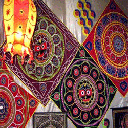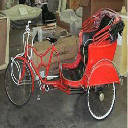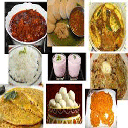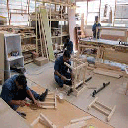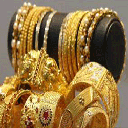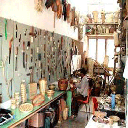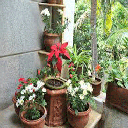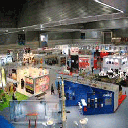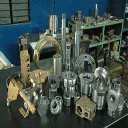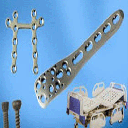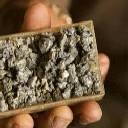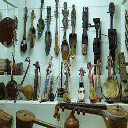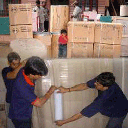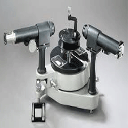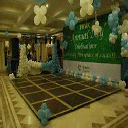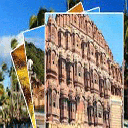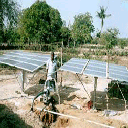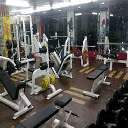West Bengal, a state in eastern India, stretches from the Himalayas in the north to the Bay of Bengal in the south. It is bordered by Nepal and Bangladesh and the states of Orissa, Jharkhand, Bihar, Sikkim, Assam, and Meghalaya in different directions. From north to south, it stretches from Himalayan Mountain to the Gangetic plain and the Bay of Bengal. West Bengal occupies only 3% of the total land area covered by India. It is a highly populated region of India and one of the fastest growing states of the country. The state comprises of 19 districts and Kolkata serves as its capital.The land is mostly plain except the northern region, which comes under the Himalayan mountain range.On the basis of landforms,The state can be divided into the following regions: Darjeeling Himalayan hill region,Terai region,North Bengal plains,Rarh region,Coastal Plain, snderbans,Western plateau and high lands,Ganges delta. West Bengal’s climate varies between tropical savanna in the southern portions and humid sub-tropical in the north. There are four main seasons viz. summer, monsoon, a short autumn, and winter.The delta region experiences more humidity in the atmosphere during summer season; the western highlands experience a dry summer like northern India, with day temperature ranging from 38 °C to 45 °C .The nights are comparatively cool carrying moisture from the Bay of Bengal. The early summer is welcomed by brief squalls and thunderstorms known as Kalbaisakhi (Nor'westers). The state gets torrential rain between June and September. The winter session starts from October and continues till February. The climate of the southern region during winter months is pleasant but there is heavy snowfall in the Himalayan regions. The state of West Bengal is very rich in natural resources. The forests, rivers, mines, hills are all essential physical entities for human activities. Basically dense forests found in the foothills of the Himalayas are sources of medicinal plants and other products useful for rural livelihood.The Ganges is the only perennial river in West Bengal that divides in to two – one branch enters Bangladesh in the name of Padma and the other branch flows in the state in the name of river Bhagirathi and river Hooghly. The northern hilly region has rivers like Teesta, Torsa, Jaldhaka, Mahananda, while the western plateau region has rivers like Damodar, Ajay, and Kansai etc. The Ganges delta including the Sundarbans area is full of rivers; creeks cover the region like a web.Of the important mineral resources, the state has a large deposit of coal and iron ore. The coal mining at Raniganj coalfield was the first mining operation in the country. This coalfield also has a large source of iron ore. Other important minerals of the state include dolomite, limestone, Rock Phosphate, granite and china clay. In the whole of the rural West Bengal and in the most of the municipal areas the primary education is free and compulsory. Free supply of text books have been under taken. Girls education up to standard VIII has been made free in rural and urban areas, including Calcutta. Schools in West Bengal are either run by the state government or by private organisations. Schools mainly use English or Bengali as the medium of instruction, though Hindi and Urdu may also be used. The schools are affiliated with the Indian Certificate of Secondary Education (ICSE), the Central Board for Secondary Education (CBSE), or the West Bengal Board of Secondary Education. West Bengal has fifteen universities. The University of Calcutta has more than 200 affiliated colleges. Bengal Engineering & Science University and Jadavpur University have notable engineering institutions. Notable collegess include Presidency College, St. Xavier's College, Medical College Kolkata. The state has many higher education institutes of national importance including Indian Institute of Technology, Kharagpur, Indian Institute of Management Calcutta, National Institute of Technology, Durgapur, Saha Institute of Nuclear Physics, Asiatic Society, Indian Statistical Institute, Marine Engineering and Research Institute etc. Among all East Indian food, Bengali food is known all over for its varied taste and flavor. The cuisine contains sweets as well as other meal accompanying dishes. The sweets made from milk and curds, namely, rasogolla, sondesh, malai somsom, chana mukhi, and raj bhog are especially famous all over India. Above all, the fish preparation of Bengal is a culinary delight for the non-vegetarian food lovers. Fish of different varieties are prepared mostly with mustard oil and mustard seeds. Fish items are sometimes marinated in spices and sometimes cooked with curd. The ilcha macher jhol is an all-time favorite. Misti doi or sweet curd is another delicacy worth savoring. The Bengali is predominantly a rice eater. All but the very devout Hindus eat fish as a principal item of their food. Bengalis prefer to other beverages, the habit of taking sweetened tea has a spread to their remotest villages. Chewing of pan laced with lime, Kattha and arecanut is universal. Drinking of palm juice today and home made alcoholic brews is largely confined to industrial labour and the tribal population.
Zoological Gardesn:Established in 1875, and spread over nearly 100 acres in the heart of Kolkata are the Zoological Gardens. Inaugurated by the Prince of Wales in 1876, it is one of the oldest and the largest Zoos of India. It also has many varieties of birds and reptiles other than the interesting flora and fauna. It comprises several animals, birds and even creatures of rare species. It has a large collection of birds and mammals, and an enclosure for reptiles, including a tortoise that is much older than the zoo itself. The Zoological Garden is a perfect tourists spot which attracts a lot of people from all over the world. Vishnu Temple :is an ancient stone temple located in Bardhaman District of West Bengal. It is believed to have been built during the Pal Age. This beautiful temple is dedicated to Lord Narayana (Lord Vishnu). The height of the temple measures around 10 m. Vidyasagar Setu (commonly known as the Second Hooghly Bridge),: is a bridge over the Hooghly River in West Bengal, India. It links the city of Howrah to its twin city of Kolkata. The bridge is a toll bridge for vehicles, but is free for bicycles. It is one of the longest bridges of its type in India and one of the longest in Asia. The bridge is named after the 19th century Bengali reformist Ishwar Chandra Vidyasagar. The bridge also has sister bridges over the river at different points, namely the Howrah Bridge (Rabindra Setu) and the Vivekananda Setu. Victoria Memorial:The city"s most celebrated landmark, this monument was built to imperial sel-confidence was the brainchild of Lord Curzon, one of India"s most flamboyant Viceroys. The domed structure was completed in 1921 with marble used from Makrana. Now a museum, the Victoria Memorial"s 25 galleries are spread over 2 different floors. The collection covers a fascinating selection of Raj memorabilia, and includes the Calcutta Gallery with oil paintings and watercolors of the city"s history. Do not miss the grand Durbar Hall, inside which lies a statue of Lord Cornwallis. Umrao Singh Boat Club: is located at Sukna in Siliguri. This is developed and maintained by Indian Army. This boat club offers many facilities for fun boating and enjoyment. Boats with different sizes and shapes are available for the tourists to hire. Pedaled and engine fitted boats are available in plenty in this boating locality. The Boat Club is located in a scenic place and is perfectly located in place nestled with tea plantations and lush green foliages. The calm and cool atmosphere in this boat club make it a very attractive weekend destination. Troika Park:it is a fun place for kids near City Centre. It has got a toy-train, a few rides and a bunch of other attractions. Adjacent to it is a deer park. You can actually walk in and touch a few of the deer. You can also find a leisure boating lake close by. Totopara:Adjacent to the sanctuary is another major attraction for those interested in ethnic tourism. Totopara is the only settlement for the Toto tribe, one of the most endangered ethnic communities in the world. Their numbers are now reduced to a mere thousand. Lots of initiatives have been taken by governmental and non-governmental agencies for the improvement of their living conditions. However, to live with them and to observe their traditional culture can still be a precious experience. Tomb of Fatth Khan:Malda the district Head quarter town is located 365 km north of Kolkata & 260 km south of Siliguri. It was formerly known as English Bazaar as an English factory was established here in 1771. Lying on the confluence of the Mahananda and Kalindri rivers the Malda town rose to prominence as the river port of the Hindu capital of Pandua. Malda is a base for visiting Gaur and Pandua. Gaur, capital to three dynasties of ancient Bengal - the Buddhist Palas, the Hindu Senas and the Muslim Nawabs - has seen three distinct eras of glory. Pandua, once the alternate seat of power to Gaur, has the third largest concentration of Muslim monuments in Bengal. Historical monuments include the mosque Jami" Masjid (1566) and the landmark Nimasari tower across the river. The Tollygunge Club: is one of the oldest clubs and a famous colonial relic housing a golf course, horse riding facilities, accommodation etc. Tiger Hill:Ideal to visit early morning when the first rays of Sun kiss the Mt Kunchenjunga and give it a golden color. To visit the hill, one needs to get up at 3:00 am in the morning. You can taste some excellent tea on your way to the hill, which will provide much needed warmth on cold Darjeeling mornings. The Zang Dhok Palri Phodang The Zang Dhok Palri Phodang :is a Buddhist monastery in Kalimpong in West Bengal, India. The monastery is located atop Durpin Hill, one of the two hills of the town. It was consecrated in 1976 by the visiting Dalai Lama. The monastery houses many rare scriptures that were brought into India after the invasion of Tibet in 1959. It also houses the 108 volumes of the Kangyur. The Radha-Krishna (Birla) Temple: is the most modernly-opulent in Kolkata and worth a visit. The adjoining tree-lined lane Queen"s Park is the most exclusive and fashionable address in the city and is worth a stroll through. Some of the biggest names in the city call it home. A close second is Sunny Park, running parallel to Queen"s Park on the other side of Birla Temple, housing the CIMA Art Gallery and the Calcutta School of Music. The Light & sound Show:The Light & Sound Show Every Friday and Saturday the cultural dept of West Bengal organizes a musical show with colourful lighting and fountains just beside the Coochbihar Palace. The show has become tremendously popular among the tourist as well as the local citizens. The Kholas (Water Falls - Springs) :like Hussain Khola etc are also worth visiting. The Kalighat Templehouses: Kolkata"s patron deity. Terracotta Temples: are the pride of Bishnupur, a small village in Bankura District of West Bengal. The Malla kings of the 16th-18th centuries constructed these temples, about 30 in all, in their devotion to Lord Krishna. This architecture betrays influences of various ancient Indian styles as well as of Mughal and Persian designs. Ras-Manch, Shyamrai, Jor-Bangla, and Radha-Shyam are some of the most important of the Terracota Temples. The basic building material of these temples is tiles made from the local red soil. The terracota tiles are decorated with filigreed carvings that have Mughal, Persian or Indian lineage. Teesta Udyan, a children"s park along the banks of the River Karala. Visit the serene and spacious tea farms located in and around the city. Tantipara Masjid:Malda the district Head quarter town is located 365 km north of Kolkata & 260 km south of Siliguri. It was formerly known as English Bazaar as an English factory was established here in 1771. Lying on the confluence of the Mahananda and Kalindri rivers the Malda town rose to prominence as the river port of the Hindu capital of Pandua. Malda is a base for visiting Gaur and Pandua. Gaur, capital to three dynasties of ancient Bengal - the Buddhist Palas, the Hindu Senas and the Muslim Nawabs - has seen three distinct eras of glory. Pandua, once the alternate seat of power to Gaur, has the third largest concentration of Muslim monuments in Bengal. Historical monuments include the mosque Jami" Masjid (1566) and the landmark Nimasari tower across the river. Talberia Lake :is situated in the outskirts of Jhilimili in West Bengal. It is a famous picnic spot, positioned about 85 km from Bankura. Surrounded by hills, the lake is created by rainwater pouring into a glade. A guard wall has been constructed to preserve the lake. Swabhumi Heritage Park:It is place where one can sample local arts and crafts as well as some of the food from its various stalls. Susunia Pahar:One of the important hills in the district, rising abruptly from the neighbouring plains to a height of 44 metres. Stone inscriptions of Chandravarma, a 4th century king, have been discovered here. From Bankura on the Bankura-Purulia road, one has to alight at Chhatna on the 13th km. Susunia is 7 km. north of Chhatna. Susunia Hill: with a height of about 440 m, is an ideal place for rock climbing in West Bengal. It is the second rock climbing site in the state after Darjeeling hills. Stone inscriptions of the fourth century king, Chandra Verma, were discovered from this place. Every year a fair is conducted at the southern foot of the hills. The Surya Sen Park: a favorite picnic spot among the local people, is located at Mahakal Pally near to Siliguri. This is an eco-friendly place for fun, entertainment and increasing awareness about alternative energy sources. A grandeur bust of the renowned freedom fighter Sury Sen is installed in the midst of the Park. The Park contains all kinds of facilities for children’s enjoyment. The Park is established in picturesque surroundings and beautifully decorated with imposing landscapes, lush green lawns and attractive fountains. Sundarbans National Park :is a UNESCO World Heritage Site that in Southeast Bengal in India. The park was proclaimed as the core area of Sundarbans Tiger Reserve in 1973 and is declared wildlife sanctuary in 1977. The meaning of the Bengali word sundarban is 'Beautiful Forest'. There are many varieties of plant species, nearly 64, with the capacity to withstand extreme conditions and salty shower on account of tidal effects. The Sundarbans forest is home to more than 200 tigers. The Royal Bengal Tigers have developed a unique characteristic of swimming in the saline waters, and are world famous for their man-eating tendencies. Some of the more popular birds are also found in this region. Sukhacara:a Gaudiya Vaishnava pilgrim center, is famous as the home of the eminent singer Govinda Datta. He was the principal singer Chaitanya Mahaprabhu"s kirtana party. Located on the banks of Ganges in North 24 Parganas District, this village is near to Khardah. St Paul's Cathedral:The largest Anglican church in Kolkata. It stands on the "island of attractions" in Kolkata - beside Victoria Memorial, Nandan - Rabindra Sadan theatre complex, and the Birla Planetarium. The building was initiated by Bishop Wilson in 1839 and was completed in 1847, in Gothic Revival style with stained glass windows and two frescoes in Florentine Renaissance style. A military engineer, Major William Nairn Forbes, designed the cathedral with the assistance of C.K. Robinson, modelling the tower and spire upon the Norwich Cathedral. The tower was rebuilt along the lines of Bell Harry Tower in Canterbury Cathedral following the 1934 Calcutta earthquake. The Bishop"s House across the street is also a very impressive piece of architecture. St. Paul’s was consecrated in 1874. South 24 Parganas district :is an important district of West Bengal State with its district headquarters in Alipore. It has the urban fringe of Calcutta on one side and the remote riverine villages in the Sundarbans. Agriculture, Industry and Pisciculture are all at their peak in the district. Sundarbans, formerly Sunderbunds, is a vast tract of forest and saltwater swamp forming the lower part of the Ganges Delta, extending about 160 miles (260 km) along the Bay of Bengal from the Hooghly River Estuary (India) to the Meghna River Estuary in Bangladesh. SingalilaNational park:It is located in west of Darjeeling, adjacent to Nepalese border. Singalila is a trekking destination in the far northwest corner of West Bengal state. Kanchenjunga, the world's 3rd highest peak, is visible for much of the trek, to the north, on the Nepalese border with Sikkim. Usually the park is accessed from Maneybhanjang, approx. one hour, or 30 km. west of Darjeeling. The park can also be accessed from Rimbik, where many trekkers finish up, or from Bijanbari, with one extra day's walking. The town of Siliguri:is the principle town in the region. This is where you are most likely to start your tour from. Siliguri on its own is not an attractive tourism destination, but it is the most important and sensitive city in the entire Eastern Himalayas due to its geographical location. Siliguri is a fast growing modern cosmopolitan and famous for three 'T's - Tea, Timber and Tourism. As one of the most important transportation hubs in the north east, Siliguri has recently become something of a boom town. Sprawling and boisterous, modern condominiums dominate the landscape on entering the town, followed by endless streets of market stalls which surround a core of car show rooms and shopping . Siddheswar Temple :is an ancient shrine located at Bahulara in Bankura District of West Bengal. The presiding deity here is Lord Shiva. The deities of Ganesh, Jai Parshwanath and Durga are also installed inside the temple. It is renowned for its unique architectural style and exquisite ornamentation of the temple walls. This temple, attributed to the Pala (medieval) period, conforms to the Orissan style of architecture with fine ornamentation depicting replicas of the temple. Shyamrai Temple or Pancha Ratna Temple of Shyam Rai :Built in 1643 by King Raghunath Singha. The walls are richly decorated with terracotta carvings featuring aspects of Lord Krishna’s life. It is one of the largest temples. The temple is dedicated to Lord Krishna. Shri Ramakrishna Temple :is situated in Belur Mutt, 6 km north of Kolkata. Established in 1938, the temple is on the banks of Hooghly River and is devoted to Shri Ramakrishna Paramahansa. It has a unique architectural style incorporating the shapes of a church, mosque and temple. Sevokeshwari Kali Mandir Sevokeshwari Kali Mandir :is an ancient temple located very close to Coronation Bridge in Siliguri and located in Binnaguri nearby to the shore of River Teesta. The temple is set in the backdrop of picturesque surroundings. One can view the majesty of the Kanchenjunga peak from the premises of the temple. Seven Kingome:An amusement park located among tea plantations.dagapur temple. Senchal Lake is located at an altitude of 8515 feet above the sea level. This lake serves as the water reservoir for the supply of water for Darjeeling. It is approximately 11 km from the town and is close to Tiger Hills. It is especially appreciated for its scenic splendor—a picnic spot, which is very popular among the tourists, both Indian and others. The area has a 9-hole golf course with a clubhouse. The Science City: is newest addition to Kolkata's long list of tourist attractions. This architectural showpiece has more than just its external grandeur. A showcase of scientific applications, this is the first and the only institution of its kind in India. The different sections of the complex include the Space odyssey, Dynamotion, Life Science Corners, Science Park, Toy Train & Ropeway , the Dinosaurs Complex and others. The main attraction of Science City is the Space Theatre - a circular auditorium with a dome-shaped ceiling which, from the interior, looks like an inverted bowl. Another major attraction is the musical fountain, where coloured jets of water dance to the sound of music. Satabdi Sishu Udhyan: is a marvelous park situated at Asansol. This park was founded by the Indian Railways in 1989. There is a wide range of amusements, especially meant for children. This park has several rides including paddle boat, rowing boat, Columbus, caterpillar and see-saw. Sarat Smriti Granthagar :exhibits include old age manuscripts, terracotta, sculpture, coins, and folk arts of several countries. Entry to the museum is free. Photography is not allowed. Santragachi Jheel :is a lake situated about 10 km from Kolkata. The lake extends over 32 acres and hosts thousands of migratory winter birds from September to March. Lesser Whistling Ducks are the main attractions here. Salugara Monastery:A monastery in the Kagyu tradition of Tibetan Buddhism. The compound includes a 100 foot stupa consecrated by the late Kalu Rinpoche. Kumaramanglam Park:A shade of its former beautiful self. The lovely lake is simply filthy. Anyway, by all means, its a place to stretch out, relax and refresh yourself. Kurseong:A lesser known destination on the tourist map is Kurseong, on the way from Siliguri to Darjeeling. A picturesque town at a height of 1,458m. Kurseong is 51 km from Siliguri on the main road, and is also an important stop on the toy train route. The alternate route from Siliguri to Darjeeling via Pankhabari also joins the main road a little short of Kurseong. It's over-a-century-old schools provide excellent education. Kurseong Town Railway station:It is a real beauty to see the train arrive and depart from this station, as the train and the vehicle traffic is controlled by the Traffic Police. Lawmeyer Park, popularly known as Nehru ParkLlies in Asansol, Bardhaman District. This park was founded by a famous German engineer named as FWA Lawmeyer in 1963. Lawmeyer Park houses about 5,000 varieties of plants. Out of these plants, many of them are rare species found in forest areas. A good collection of indoor plants are planted in the green house of the park. Different modes of entertainment including musical dancing fountain, mini zoo, deer park, fast food center and bathing pool are provided for the visitors. Lloyd Botanical Garden :stands in the memory of a resident of Darjeeling, Mr. William. In 1878, he made over a beautiful piece of land to facilitate the creation of a botanical garden. Initiated as a branch of the Royal Botanical Garden, Kolkata, the garden is situated at an altitude of 1800 meters. The garden represents the characteristic flora of the Eastern Himalayas. Lukochuri Darwaja:Located to the south-east of the Kadam Rasul Mosque, this is a place where the sultans played hide and seek with the begums. There is a difference of opinion as to who built this gate, some say that Shah Shuja built it in 1655, others opine that it was built by Allauddin Hussein Shah in 1522. The innovative architectural style makes it an interesting place to visit. Madangopaljiu Temple: is situated at Mellak village, near Bagnan town in Howrah District. It was built in 1651 and contains some early specimens of terracotta art. The temple is an interesting spot for pilgrims, as well as tourists interested in archeology. Madanmohan Temple:King Durjana Singh Deva built the temple in 1694 AD in the ekaratna style, a square flat-roofed building with carved cornices, surmounted by a pinnacle. Impressive carvings on the walls depict scenes from the Ramayana, Mahabharata and the Puranas. Madhuban Park: is a spectacular park located in the outskirts of Siliguri is founded by Indian Army. This park is well maintained and serves as an exquisite picnic spot in West Bengal. The Park is the worthy trail of the renowned Sukna forest. The lush green surroundings, cool climate and serene ambiance in this Park offer the tourist a secluded evenings and weekends. Mahabodhi Society of India:A small, but interesting Theravedan Buddhist temple located in an historic building. There is a library and shrine room on the second floor. Meditation classes are held every 1st and 3rd Sunday of the month. Mahananda Weir Wildlife Sanctuary: situated between Mahananda and Teesta Rivers, is a vast expanse of forest lands enthralled with lusting green undulated hilly regions in the foot hills of Himalayan ranges. Mahananda Weir Wildlife Sanctuary is a natural habitat of many varieties of wildlife fauna and flora. The foliage includes thick woody trees and dense bushes. The animals include rare mountain goat, Chetal, barking dear, fishing cat, sambar, tiger, elephant and Indian bison. Matihon Dam:It is about 20 km from Asansol. It is approachable via Neamatpur or Asansol Bypass, or one can take a little circuitous route via Chirkunda. Those travelling in a car often take one route for going out and return by the other. Malda :the district Head quarter town is located 365 km north of Kolkata & 260 km south of Siliguri. It was formerly known as English Bazaar as an English factory was established here in 1771. Lying on the confluence of the Mahananda and Kalindri rivers the Malda town rose to prominence as the river port of the Hindu capital of Pandua. Malda is a base for visiting Gaur and Pandua. Gaur, capital to three dynasties of ancient Bengal - the Buddhist Palas, the Hindu Senas and the Muslim Nawabs - has seen three distinct eras of glory. Pandua, once the alternate seat of power to Gaur, has the third largest concentration of Muslim monuments in Bengal. Historical monuments include the mosque Jami' Masjid (1566) and the landmark Nimasari tower across the river. Masak and Lady Hill: is situated near Khatra, (about 36 km from Jhilimili) in Bankura District of West Bengal. The hill is located at an altitude of about 112 ft. Shiva temple of the Masak hills, Mukutmanipur are the major attractions. Mati Jheel:This beautiful horseshoe shaped lake was excavated by Nawazesh Mohammad, the husband of the famous Ghasseti Begum. In the palace adjoining it (now in ruins) Lord Clive celebrated the acquisition of the Dewani of Sube Bangla (Bengal, Bihar & Orissa) in 1765. Moti Jheel was the home of Warren Hastings when he became the Political President at the Durbar of the Nawab Nazim ( 1771 - 73 AD ). Sir John Shore, afterwards Lord Teinmouth, also lived here. Moti Jheel is also known as the "Company Bagh", due to the fact of it having been in the occupation of the East India Company. The only old building existing is the Mosque of Shahamat Jang. Mati Mandir:Established in 1920, Matri Mandir is delightful shrine of Holy Mother (Sarada Ma), located at Joyrambati village in Bankura District of West Bengal. It was constructed exactly on the site, where Sarada Ma was born. Also, it was here that her father Ramachandra Mukhopadhyaya had his original dwelling-house. Matri Mandir has the white marble idol of Mother, which is daily worshipped with appropriate rites and offerings. A metallic flag embossed with the sacred word "Ma" (Mother) adorns the crest of its white dome. The holy relies of Mother is preserved in the sanctum. A small sized Shivling is also installed in the premises of the temple. Midnapore: uarters of, and gives its name to, the Pasis a town in West Bengal, India. The city is the headqchim Medinipur district of the state of West Bengal.The climate follows a hot tropical monsoon weather pattern. Summers last from April to mid-June with diurnal highs ranging from the upper 30s°C to the mid 40s°C and lows in the low 30s°C. Daily heat is often followed by evening rains known as kalboishakhis or dust-storms. Meghnad Saha Planetarium: is situated in the University of Burdwan grounds, in Bardhaman, West Bengal. Opened in 1994, it was built with the help of Japanese government. The planetarium boasts of the latest technology instruments used for the show. Millennium Park:Built on the bank of the river Ganga, this park was inaugurated on 1st January, 2000. This has been developed by Kolkata Metropolitan Development Authority on the land belonging to Kolkata Port Trust in an endeavour to promote tourism and to beautify the riverfront. The park has been a major attraction of the city and draws thousands of visitors round the year. The enchanting beauty of this park is that adjacent to the river. One can feel a cool breeze with colorful flowers around. Millennium Park is the perfect picnic spot for to spend time with family and friends. Mirik:Though becoming increasingly popular, Mirik is still one of the unspoilt hill stations in the country. It is being promoted as a 'new' hill station. Mirik is about 50 km from both Siliguri and Darjeeling. Nestling in forested hills at an altitude of around 1,767 m. the resort has the man made Sumendu Lake as the focal point. Since it's also the town's sewer it might not be wise to swim here. Mirik Lake:The lake of Mirik is a nice stretch of water where you can enjoy horse riding and boating. You will be chased by a number of horse riders who will offer you an affordable ride on the horse, even if you don"t want one. The best way to avoid them quickly is to tell them that you will take a ride after boating and lunch. Some riverside restaurants can offer average quality meals. Mornington Fort: is situated at the confluence of the Bhagirathi and Rupnarayan Rivers in the village of Gadiara in Howrah District, 90 km from Kolkata. Built by Lord Clive, the then Governor General of British India during 1765-67, this massive fort was intended to guard the entry of ships. Mrinmoyee Temple:dedicated to Goddess Durga, is located at Bishnupur in Bankura District. It was constructed in AD 997 and the idol of the temple is made of clay. The holy Nababriksha - nine trees growing as one tree, situated in the temple courtyard is a point of attraction. The temple is located 3 km from city center. Mukutmanipur :is about 82 km from Bishnupur, by the side of the river Kangsabati. The main attraction is the dam across the river and the hilly landscape. This is considered as the second biggest earth dam of India. Mukutmanipur is famous as one of the best picnic spot in West Bengal. Murshidabad:named after Nawab Murshid Quli Khan, the Dewan of Bengal, Bihar and Orissa under Emperor Aurangzeb, is related to events that ultimately changed the history of India, At Plassey near Murshidabad the histortc battle between Nawab Siraj-ud-Daula and Lord Clive had taken place. The relics strewn today speak of those times. But the history of this region date back perhaps further. Nasipur Palace:The palace was built by King Kirtichand Bahadur in late 19th century. Within the palace compound are temples: the Ramachandra temple and the Lakshmi-Narayana temple. Closely situated is the Ashram of Mohandas and Jafraganj Deuri. The two cannons present here are said to be gifted to Mir Jafar by Clive. National Institute Of Technology, Durgapur:is one of the premier technical institutes in India and it is a jewel in the Durgapur crown.The National Institute of Technology, Durgapur, India (formerly Regional Engineering College, Durgapur), was established under an Act of Parliament in 1960 as one of the eight such colleges aimed to function as a pace setter for engineering education in the country and to foster national integration.If you visit Durgapur do not miss NIT where you can interact with some of the best technical minds in the country. National Library of India Alipore National Library of India, Alipore: Oldest Library in India with a huge collection, including some rarities. Close to the five-star Taj Bengal hotel and the Zoological Gardens of Kolkata. Nico Park :is the Disneyland for Kolkattans with its various adventure rides. Popularly known as Jheel Meel. Nicco park is one of the biggest amusement parks in the country and has innovative entertainment for all age group. It offers wholesome fun for children as well as adults and draws crowds from suburban Kolkata especially on the weekends. North 24 Parganas :is a district in southern West Bengal, India. North 24 Parganas is West Bengal’s most populous and most economically developed district. It is one of India's most industrialized districts. It is also the tenth largest district in the State by area and second most densely populated district. Old Fort of Nal King:Hidden deep inside the Chilapata Forests the ruins of a thousand years old fort of Nal King has a tremendous historical and archeological importance. The ruins consist of a broken wall and a broken gate of the fort. Built in the 5th century during the Gupta Empire the ruins still recall the memories of the Golden Age. The forest also contains a unique tree that bleeds like humans. The fluid that comes out is blood-like in color and density. Padmaja Naidu Zoological Park Padmaji Naidu Zoological Park :is claimed to be the only zoo in the world to breed Tibetan wolf in captivity. It is also the first South Asian zoo to breed Snow Leopard and Siberian Tiger. Rare red pandas are also seen here. The park was dedicated to the memory of Padmaji Naidu, former governor of West Bengal, by Indira Gandhi, the then prime minister of India. Panchetdam:It is about 20 km from Asansol. It is approachable by Chirkunda. Panchmura:It is about 10 km from Bishnupur, the village where they make the famous terracotta horses. Rabindra Sarovar :is a large open lake and park area housing boating clubs,an open air theatre and eateries. Radha-Shyam Temple :is one of the famous terracotta temples at Bishnupur in Bankura District of West Bengal. The temple was built by King Chaitanya Singha in 1758 and is dedicated to Lord Krishna. The temple architecture consists of a square building with a curved roof and is crowned by a single tower. The nearest railhead is three kilometers away. Rahreswar shibtola:This temple is more than 800 years old (according to the Archaeological Survey of India). It is built in the style of Rathas of Southern India. Lovely serene environment - take a few steps out and you will see the remains of a British airforce airport. Ramakrishna Mission Institute Ramakrishna Mission Institute :in Golpark houses a bookstore and a library, among other amenities, with books written by and about Swami Vivekananda and Sri Ramakrishna Paramhansa, among others. Ramkeli:It is 14 km south of Malda- contains footprints of Sri Chaitanya on stone. Rarheswar Temple :is an architectural landmark located at Kanksa Village in Bardhaman District of West Bengal. It is a highly revered shrine of Lord Shiva. Legend has it that this beautiful temple was built to protect the village from the attack of Bhaskar Pandit, a devotee of Shiva. Ras Mancha:The oldest brick temple located in Bishnupur, Ras Mancha stands out from the rest for its structure and it is the only temple of its kind in the whole country. It was built by Bir Hambir in AD 1587. A magnificent red brick building, it has only a single chamber, the sanctum sanctorum, with an elongated tower, surrounded by hut shaped turrets. A passageway surrounds it and some large cannons found here dates back to the Malla period. It was built to host an annual festival where idols, brought from all over the kingdom, were displayed under the arches. Rasik Bill:Spread over an area of 2500 hectares on the Alipurduar - Khamakhyaguri Road RasikBill is the largest abode of migratory birds in North Bengal. There is a well-maintained resort just beside the wetland. Rasmancha:Oldest brick structure. Built in 1587 by Bir Hambir is a pyramidal structure in the centre of the town, where the deities from the other temples are brought in a procession on the occasion of the Rasa Festival. There are some cannons of the Malla kings in the area. Regional Creative Art Centre :is located in the premises of Rajbati, the royal palace of Burdwan Raj. It was established by the University of Burdwan in 1965. The collections include Indian art and antiquities, old manuscripts and documents, sculptures of marble stone, paintings of Indo-European school, and objects of archaeology, folk arts and crafts. There is a library with three thousand monographs on art and archaeology. River Karala:Walk through the bank of river Karala and enjoy the nature. The tiny River Karala flows through the middle of the town bisecting it into two halves, thus earning the sobriquet, 'the Thames of Jalpaiguri'. The two banks of the river are connected with a few small beautifully laid bridges. You can even take a boat ride up the gentle Karala River. Also enjoy the beauty of the well-maintained park by the side of the River. Royal Calcutta Golf Club :is the oldest golf club in the world after St. Andrews in Scotland. Sagar Dighi:The most important water body in the town the Sagar Dighi is situated in the heart of Coochbihar. Surrounded by the age-old royal heritage buildings by the 4 sides of the square shaped lake Sagar Dighi is also famous for feathered animals. A large number of migratory birds assembled in the lake each year. Salt Lake Stadium:A newly constructed Salt lake stadium, also known as Yuba Bharti Krirangan is also the largest stadium in Asia. It has hosted several important international tournaments. Adina Masjid :built in 1369 by Sultan Sikander Shah it was one of the largest mosques in India. Carved basalt masonry from earlier Hindu temples is said to have also been used. Adyapeath Temple: is a white marble temple situated at Dakshineshwar, a pilgrim town on the banks of the Hooghly River, North 24 Parganas District. This temple functions under Dakshineshwar Ramakrishna Sangha Adyapeeth and it stands as a symbol of the unity of all religions. The spire of this temple combines the moon, the star and Lord Shiva’s trident. The temple has three altars, one atop the other. The idol of lord Ram is placed in the first altar. The topmost altar contains the deities of Lord Krishna and Radha. Thousands of devotees attend the various pujas held here. Aloobari Gomba:which is situated three kilometers away from the center of Darjeeling, is a monastery where you can find Tibetan and Sikkimese monks. These monks sell religious accessories and other handicrafts. If you are interested in shopping as well as sightseeing, then Aloobari Gomba is a place of choice to visit. Aloobari Gomba is known as Mak Drong Gomba and is along Tenzing Norgay Road. Thupten Sangachoeling Gompa and Sonada Gomba are other monasteries also seen nearby, in between Aloobari Gomba and Darjeeling. The Ambhotia Shiva Temple :is on the way towards Ambhotia Tea Estate and the temple in itself is a lifetime experience of scenic beauty. Ambhotia Shiva Temple,:a famous Shiv Temple, situated in the amidst of Ambotia Tea Estate. Anand Niketan Kirtisjala:Established in 1961, Anand Niketan Kirtishala is a museum located at Bagnan in Howrah District. It has a rich collection of ancient terracotta figures, potsherds, potteries, temple terracotta plaques, specimens of folk art and craft, scroll paintings, old Bengali and Sanskrit manuscripts, coins, stone sculptures, bronze icons and wooden objects. The museum also has a well-equipped library. It also maintains a card index of mediaeval temples of Bengal and of local historical sites. Antila: is a small village in Howrah District of West Bengal, India. There is more than one bigest flower garden avilable. This garden flower exported all over india and world. Asansol :is a city in Bardhaman district of West Bengal. It is the second largest urban agglomeration in West Bengal and is an important mining and industrial centre. Badamtan Tea Estate: was originally owned by the more than 150-years-old Lebong Tea Company. The tea estate was one of the tea company owned and managed by the British. It is located across the Rangit River. A walk to this tea estate will take a refreshing half a day. Badamtan Tea Estate is also a place en route in a hiking from Darjeeling and Glenburn. Bankura: is a city and a municipality in Bankura District. In the Mahabharata, Bankura was described as Suhmobhumi. One of the most influential God of the district Dharmathakur is called Bankura Roy. The name of the district may come from his name. The district has good climatic conditions and irrigation facilities. Bankura is rich in natural beauty, with large tracts of forests, hills and gleaming rivers. There are a number of temples and places of historical significance. The high-necked terracotta horse from Bankura has become a symbol of excellence in Indian handicraft. Bara Imambara :is a mosque, situated just opposite the palace. Both are on the side of the river Bhagirathi. Bara Sona Masjid:Malda the district Head quarter town is located 365 km north of Kolkata & 260 km south of Siliguri. It was formerly known as English Bazaar as an English factory was established here in 1771. Lying on the confluence of the Mahananda and Kalindri rivers the Malda town rose to prominence as the river port of the Hindu capital of Pandua. Malda is a base for visiting Gaur and Pandua. Gaur, capital to three dynasties of ancient Bengal - the Buddhist Palas, the Hindu Senas and the Muslim Nawabs - has seen three distinct eras of glory. Pandua, once the alternate seat of power to Gaur, has the third largest concentration of Muslim monuments in Bengal. Historical monuments include the mosque Jami' Masjid (1566) and the landmark Nimasari tower across the river. Baraha-Mihirer Dhipi or Khana-Mihirer Dhipi :is an archeological site under the Archaeological Survey of India (ASI). The place was once an important center of the Gupta Empire. Ruins of temples built during the Gupta period have been excavated here. It is situated at Berachampa in North 24 Parganas District of West Bengal, about 50 km from Kolkata. Bardhaman district: is divided into two parts - the larger eastern part is often referred to as the 'granary of West Bengal' and the western part is a mining-industrial belt. There are many historical sites at Bardhaman. Bardhman Science Centre:established in 1994, is situated at Bardhaman, West Bengal. It is a science museum of excellent standard situated on the Golapbag Road near the University of Burdwan. The museum showcases various fabricated objects related to science. The museum also holds a park. Baudda Dharmankur Sabha:A Buddhist monastery established in 1892 and run by the Bengal Buddhist Association. The distict red building mostly consists of a school and guest house. There is a very small Buddhist shrine tucked away on the 1st floor. BBD Bagh:Government House, Calcutta, built in the early 19th century, is modelled on Kedleston Hall. The House was once the seat of the Viceroys of India; later, when the Government moved to New Delhi, it became the residence of the Governor of Bengal, a function that it fulfils to this day. While the basic features of Kedleston have been faithfully copied (the Palladian Front, the Dome etc.), Government House is a much larger, three storeyed structure. Also, the Government of India evidently did not have the funding constraints that forced the Curzons to leave their house incomplete: Government House has all four wings originally conceived for Kedleston. So today, a "complete", brick built Kedleston, on a much grander scale, is located in its acres of gardens at the heart of the Calcutta business district. Belurmath:It is situated in North part of Howrah (town)and is approximately 4 km from Howrah railway station. Its a worthwhile visit. Situated next to the Ganges one can sit on the banks of the river Hoogly during evening time and relax. Diagonally opposite across the river Hoogly is situated Dakhineshwar Temple. The Bengal Natural History Museum :is near Chowrashtra, the heart of Darjeeling. The museum contains a representative and comprehensive, but dusty, collection of Himalayan and Bengali fauna. The museum houses more than 4300 specimens. Bird species, reptiles, and other animals of the Eastern Himalayas are displayed at true to life altitudes. The butterfly and beetle section merits special mention. Specimens of estuarine crocodile, which is responsible for the greatest loss of human life in Asia, are also seen here. Mineral forms of various stones are attractively displayed. Bhabani Pathak’s Tilla :made famous in the novel Durgesnandini by Bankim Chattopadhyay. An unbelievable network of tunnels starting near the City Center region right up to the Damodar river. Legend has it that unless you know the map of the tunnel system, it would nearly be impossible to navigate. Nowadays, it is a protected monument (the entrance of the cave). Bhangzang Salamander Lake:It is located 14 km from Kurseong. In the past, it used to be a favorite place for the British and people from the neighboring towns used to hang out here frequently. A relatively unknown getaway among the tourist destinations in Darjeeling brought to you by Khorlo. It is a beautiful green-tinged lake that shelters the rarest and most endangered species of salamanders – a species under threat of extinction. Bhutia Busty Gompa :is a monastery situated just under a kilometer out of Darjeeling. Kanchenjunga provides a spectacular backdrop to this monastery. This monastery is a branch of the Nygpama sect’s Phontag Monastery in Sikkim. It was transferred to Darjeeling in 1879. The shrine in the Gomba is originally situated on the Observatory Hill. Bibhutibhusan Wildlife Sanctuary :is located at Parmadan in North 24 Parganas District of West Bengal. It is named after Bibhuti Bhushan Bandopadhyay, a great writer. Spread out over 640 hectares of forestland, the park lies on the banks of Ichhamati River. The highlight of the sanctuary is spotted deer. Monkeys and birds can also be seen. Children's park and the mini zoo are nearby. The sanctuary is also known as Parmadan Deer Park and is around 120 km north-east of Kolkata. Biharinath :is located about 55 km from Bankura. At a height of 1481 ft, it is the highest hill in the district. There is a wide range of flora and fauna. Main attraction is a temple and a small tank located at the foot. The hill houses a few wild animals including chameleon, racaphorus, hyena, and pangolin. Biharinath is an ideal destination for nature lovers. Bijoy Bahar: is a beautiful place situated at the north-west side of Ramana Bagan, in Bardhaman, West Bengal. The tomb of Maharaj Bijoy Chand is situated here. The cool and peaceful environment around this place makes it a favorite site to rest and relax away from the hustle and bustle of the city. Birla Industrial & Technological Museum: on Gurusaday Road is a modern museum with lots of interesting artifacts, shows, events and activities, primarily popular with school-going children. Birla Planetarium:One of the oldest Planetarium in India. The only planetarium in the country whose dome houses a collection of projectors and optical equipment expensively imported from East Germany. It is the largest planetarium in South-East Asia and the second largest in the world. Daily shows in English, Hindi and Bengali. Bishnupur Bishnupur : is a town in Bankura district of West Bengal famous for its terracota temples and the balucheri sarees. Bishnupur being a temple town, the focus is on temples, all built of terracota during the reign of the Malla kings, who ruled over the area prior to the arrival of the British. Central National Herbarium: the largest herbarium in South East Asia, is situated within the Indian Botanic Garden at Shibpur in West Bengal. It was established by the Botanical Survey of India. Central National Herbarium has over 1.5 million dried out plant specimens. It also preserves and distributes different species of plants. Research facilities are provided to both Indian and foreign scholars in plant morphology, anatomy and palynology. Chandraketugarh :is an archeological site, located on the banks of the Vidyadhari River, about 35 km north-east of Kolkata in North 24 Parganas District of West Bengal. This port-city, equaling the age of Mohenjadaro, was discovered in 1955. The excavations held here have revealed several materials, which prove the antiquity of the site and its archeological importance. Evidences of the Maurya to the Pala ages have been excavated, which include clay pipes, drainage systems, minted copper coins, ivory bangles and beads, bronze and terracotta images. Chika Masjid:Malda the district Head quarter town is located 365 km north of Kolkata & 260 km south of Siliguri. It was formerly known as English Bazaar as an English factory was established here in 1771. Lying on the confluence of the Mahananda and Kalindri rivers the Malda town rose to prominence as the river port of the Hindu capital of Pandua. Malda is a base for visiting Gaur and Pandua. Gaur, capital to three dynasties of ancient Bengal - the Buddhist Palas, the Hindu Senas and the Muslim Nawabs - has seen three distinct eras of glory. Pandua, once the alternate seat of power to Gaur, has the third largest concentration of Muslim monuments in Bengal. Historical monuments include the mosque Jami' Masjid (1566) and the landmark Nimasari tower across the river. Churulia:Here the famous poet - Kazi Nazrul Islam was born. He is considered the national poet of Bangladesh. The village is about 17 km from Asansol, and contains a museum with his works and a memorial for him. A fair with high standard cultural programmes are organised on the occasion of the poet"s birthday in the Bengali month of Jaistha (May-June). Cooch Behar:It is situated in the foothills of the Eastern Himalayas. It is the only planned town in North Bengal region with remnants of royal heritage. One of the main tourist destinations in West Bengal, the town is well-known for the Cooch Behar Palace and Madan Mohan Bari and has been declared a heritage town. Cooch Behar Palace:he most important tourist attraction in Coochbehar is the Palace or Rajbari- the city"s pride even today. In 1887 the famous Koch King, Maharaja Nripendra Narayan built this magnificent palace. The creation of this palace was influenced by the classical European style during Italian Renaissance. The glorious double storied brick building covers an area of 4768 square meters. The architecture of the Palace is worth mentioning. The building contains more than fifty massive halls, which include the bedrooms, dressing rooms, billiard room, kitchen, dinning hall, dancing hall, library, and the ladies gallery. The rooms deserve special attention for their beautiful Royal paintings that adorns the ceiling as well as the interior wall. The Coronation Bridge :at Sevoke. This is about 23 km from the city on way to Gangtok/Kalimpong and Dooars on the National Highway 31. Dakhil Darwaza:Built in 1425 and also known as Salami Darwaza it was once the main entry for the fort. It is more than 21 metres high and 34.5 metres wide. Dakshineshwar:a pilgrim town close to Kolkata, is located on the banks of the Hooghly River, (a tributary of the Ganges River). The town is famous for its Kali Temple, 12 Lord Shiva Temples and a Radha-Krishna Temple. The place came into prominence because of Shri Ramakrishna Paramahansa, saint and guru of Swami Vivekananda, who stayed and meditated inside the Dakshineshwar Kali Temple. The Dalmadal Caman :is one of the major attractions in Bishnupur, West Bengal. This 3.8 m long cannon with exquisite engravings has a barrel with a diameter of 28.5 cm. In 1742, during the reign of Raja Gopal Singh, Dalmadal Caman was used to repulse the troops of Maratha leader, Bhaskar Pundit. It supposed to have protected Bishnupur when the Bargis (Maratha warriors) attacked from the west. Darjeeling :is one of the most magnificent hill resorts in the world. This heavenly retreat is bathed in hues of every shade. The flaming red rhododendrons, the sparkling white magnolias, the miles of undulating hillsides covered with emerald green tea bushes, the exotic forests of silver fir - all under the blanket of a brilliant azure sky dappled with specks of clouds, compellingly confounds Darjeeling as the Queen of the Hill Stations. Darjeeling is internationally famous for its tea industry and the Darjeeling Himalayan Railway, a UNESCO World Heritage Site. Deer Park:Now known as DowHill Park, on the DowHill Road end in the Forest Area. It is recommended to trek to the top and walk back using the short cuts through the Jungle. If you opt you can take a Cab to the top and then walk back. You will enjoy the walk and remember your whole life. You can also see the beautiful cottages of the British Raj time. Deolo Hill:Deolo Hill, Kalimpong This is a must see for all the nature lovers visiting Darjeeling. The view of tea gardens from a park on the top of this hill will sweep you off your feet. You will find yourself in a garden on the top of the hill. You'll be surrounded on all sides by tea gardens going thousands of feet deep, and the entire picturesque landscape guarded well on all sides by high rise mountains. Kalimpong is a little warmer than Darjeeling. On your way from Darjeeling to Kalimpong, you will come across many hill points and a picturesque view of river Teesta. You can enjoy rafting on the river, if you have enough number of enthusiasts in the group. DEUL PARK :is a near by location from Durgapur City. It is an ideal place for day out . Spent a day in the bank of Ajoy river. with spellbound beauty of natural park. Have some fun with water ride. Do not forget to go to the Echai Temple built in 800 years ago. Digha :is a seaside resort town in the state of West Bengal, India. It lies in East Midnapore district and at the northern end of the Bay of Bengal. It is the most popular sea resort in the West Bengal. Digha is known for its beaches.It is one of very few popular beaches in West Bengal, it gets overcrowded, especially during the cooler winter break.The entire stretch of the Digha seaface from Old Digha to New Digha is filled with casuarina plantations, which looks beautiful. Tourists come here and bath in the sea, stroll by the beach along the casuarina trees and enjoy the sights and scenes offered by this magnificent stretch of sea. Durgapur :is an industrial town situated along the banks of Damodar River. It is also a major rice-trading center in the district. Major industries in the township are Durgapur Steel Plant (DSP), Alloy Steel Plant (ASP), Durgapur Chemicals Limited, Phillips Carbon Black Limited and Durgapur Thermal Power Station (DTPS), which is the main source of power for the town. Durgapur Barrage:It is definitely one of the best places to see, if you are interested in one of two things: nature and man"s effort to control its fury. And if you really are game, you should be there at the height of monsoons. Try peering over the railings to watch water being let out of the lock-gates. It is a phenomenal sight. A few yards away from the main barrage is the canal. There is a short foot bridge over it. Try crossing with a lock gate open. It is dizzying. And finally, get down by one of the sides (Bankura or Durgapur - prefer Durgapur), the beaches. It is really pretty. Finally, there are a few fishermen who fish in those waters. Pay a few bucks and ask them to give you a ride. Earlier it used to be a great spot for bird-watching in the winters. But the birds have decreased al though if you go in the early morning you can still see lots of birds. Howrah District :is located on the western bank of the river Hooghly. It is the second largest city in West Bengal. The city is connected to Kolkata over the Hooghly River by the huge Howrah Bridge and Vidyasagar Setu Bridge. Himalayan Zoo:Everest Museum and Mountaineering Museum are entered through the Himalayan Mountaineering Institute Zoo. The zoo and the two museums are run by the Himalayan Mountaineering Institute, which trains mountaineers. The mountaineering museum has a grand collection of historical mountaineering equipment, specimens of Himalayan flora and fauna, and a relief model of the Himalayas. Ichhay Ghose Temple :is at Gourangapur village in the Asansol subdivision of Bardhaman District. Goddess Bhagabati is the deity enshrined here. This beautifully built brick temple is more than a hundred and fifty years old. According to tradition, it was erected by a devout person, Ichhay Ghose. Indian Museum:Established in 1814, this was the first such museum in Asia. Among its famous collection is the urn that held the ashes of the Buddha (though this is generally not on display), an Ashoka pillar (the three-lion symbol from which became the official emblem of the Republic of India) and numerous rare antiques. Jafarganj Cemetery:About half a mile from the Hazarduari Palace is Jafarganj the ruined palace of Mir Jafar. The Cemetery contains the tombs of the Nawab"s Nazim, from Mir Jafar to Humayun Jah. Mir Jafar"s father Syud Ahmed Nazafi, Alivardi Khan"s sister, Shahkhanum, Mir Jafar"s widows, Munni Begam and Babbu Begam, Mohamed Ali Khan, the brother and Ismail Ali Khan and Asraf Ali Khan, the sons-in-law of Mir Jafar, lie buried here. This cemetery was built by Mir Jafar, over an area of 3.51 acres. Jagdish Mandir :on Bank Road (on way to the Eagle"s Craige). This is a very old temple (almost 300 years old) of Lord Jagannath. The attraction of this temple is that the temple is still in the old style made of complete wood interiors. The two statues of Lord Jagnnath (similar to the idols of Jagnanath Puri) are really very very attractive and worth seeing. The sight of these statues in itself will tell you the power and blessing of the Almighty Lord Vishnu"s incarnation Lord Jagannath (Lord Krishna). The Atka Prasad of this temple is very very popular. The rath yatra of Lord Jagannath has its own glory and attraction. The Yatra co incides with the yatra of Lord Jagannath in Puri. Jairambati and Kamarpukur:It is 43 km from Vishnupur are Jairambati and Kamarpukur, birthplaces of Sri Ma Saradamoui and Sri Ramakrishna Pramahansa. Near Kamarpukur is the historic Garh Mandaran, made famous by Bankim Chandra chatterjee. Jaldapara Wildlife Sanctuary: is a protect park situated at the foothills of Eastern Himalayas in Alipurduar Sub-Division of Jalpaiguri District in West Bengal and on the bank of river Torsa. Jaldapara, the vast grassland with patches of riverine forests was declared a sanctuary in 1941 for protection of the great variety flora and fauna, particularly one-horned rhinos, an animal threatened with extinction. The main attraction of the sanctuary is Asiatic one-horned rhinoceros. The sanctuary holds the maximum number of rhinos population in India. The other animals consists of Royal Bengal Tigers, elephants, deers, sambhar, barking deer, spotted deer and hog deer, wild pig, bisons. Jaldapara is a paradise for bird watchers. Jalpaiguri: is a town in the state of West Bengal, India. Jalpaiguri is the largest district in North Bengal, and is bounded by Bhutan to the north and Bangladesh to the south. Nepal is also nearby. The district is famous for tea gardens, rice plantation and heavy rainfall. While the district is not a recognized tourist area, it offers a a pleasant environment, and is more relaxed than the nearby tourist destinations of Darjeeling and Gangtok. Rajbari means Palace. The palace gate at Rajbari is a large unreinforced concrete arch structure. An old Shiva temple about 15 km from the town. Jatileshar Temple: tie a stone on the branch of the old tree and wish for good. Jogesh Chandra Archaeological Centre:Established in 1951, Jogesh Chandra Archaeological Centre exhibits artifacts of the Malla kings and is located at Bishnupur. The center also features a unique collection of prehistoric implements, large assemblage of documents and manuscripts, stone and terracotta sculptures, epigraphs, bronzes, coins of early and mediaeval period, scroll paintings and painted manuscripts-covers, and over four thousand mediaeval manuscripts in Sanskrit, Prakrit and Bengali. Jogomaya Kalibari, a famous temple dedicated to the Goddess Kali on Temple Street. It also houses a temple of Baba Loknath. Jorbangla Temple :of Keshta Rai - Built by King Raghunath Singha Dev II in the 17th century. The ornate terracotta carvings are set off by the roof in the classic chala style of Bengal architecture. Joychandi Pahar:It is a popular picnic spot and centre for rock climbing training, is about 30 km from Asansol. One has to take a train on the Asansol-Adra line to get there. Jubilee Park:It is a park located on the spurs of the River Teesta. Kadam Rasul:Malda the district Head quarter town is located 365 km north of Kolkata & 260 km south of Siliguri. It was formerly known as English Bazaar as an English factory was established here in 1771. Lying on the confluence of the Mahananda and Kalindri rivers the Malda town rose to prominence as the river port of the Hindu capital of Pandua. Malda is a base for visiting Gaur and Pandua. Gaur, capital to three dynasties of ancient Bengal - the Buddhist Palas, the Hindu Senas and the Muslim Nawabs - has seen three distinct eras of glory. Pandua, once the alternate seat of power to Gaur, has the third largest concentration of Muslim monuments in Bengal. Historical monuments include the mosque Jami" Masjid (1566) and the landmark Nimasari tower across the river. Kalimpong:The first thing that strikes the traveler visiting Kalimpong is its quiet atmosphere. The peaceful ambience that pervades is heightened by the presence of monasteries and churches across the town. Kalimpong is also known for its bustling bazaars and traditional handicrafts. It is famous for its orchids and nurseries. Kalimpong offers panoramic view of the great Himalayan ranges that lie beyond it Kalyaneswari Temple:The temple of the Lady of Fulfilment, about 20 km from Asansol has been a place of pilgrimage, particularly for barren women, for about five centuries. It is near Maithon. Normally one makes it a part of a visit to Maithon Dam. Kanchenjunga: is the third highest mountain in the world. Kanchenjunga translated means 'The Five Treasures of Snows', as it contains five peaks, four of them over 8,450 meters. The treasures represent the five repositories of God, which are gold, silver, gems, grain, and holy books. Kanchenjunga is also called Sewalungma in local Limbu language and considered sacred in Kirant religion. Kangsabati Dam:Kangsabati Dam is one of the main attractions of Bankura District in West Bengal. The dam, built over the Kangsabati River, is the second biggest earthen dam in India and the largest dam in the district. It is 10,098 m long and 38 m high. The surrounding places are known for their scenic beauty. There is a deer park by the side of the reservoir. Mukutmanipur is located around the dam. Kath Gola:The palace garden of Raja Dhanpat Singh Dugar and Lakshmipat Singh Dugar and their famous Adinath Temple were built in 1873, by Harreck Chand. The walls of this temple are also intricately designed. A typically Jain style of ornamentation lends a unique beauty to this Jain temple. It is about half a km South-East of Mahimapur. Though some of its glory has been lost, it still remains a major tourist attraction, Monchiefly because of the beautiful temple with an admirable work of stucco. Khola Waterfalls:There are many waterfalls in and around Kurseong and collectively known as Kholas among the local members Kolkata (formerly Calcutta): is the capital of West Bengal and the second largest city in India (after Mumbai). If Bangalore is the Seattle of India, then Kolkata is the sub-contintent's New York. It is an 'in your face' city that shocks and charms the unsuspecting visitor. Long known as the cultural capital of India, Kolkata continues to spawn generations of poets, writers, film producers and Nobel Prize winners. If your trip only allows for a visit of one or two of India's metropolitan cities, then definitely consider placing Kolkata on your itinerary. Love it or hate it, you definitely won't forget the city on the Hooghly. Koro Hill:20km away from Bankura is a scenic location, Koro Hill. At the top of the hill, there is a beautiful temple of Savitri Devi. Koro Hill, 400ft high, is set amidst picturesque surroundings. Amarkanan, a beautiful village is located at the foot. Durgapur Steel Plant:The steel plant is one awesome thing to see. It is hard to imagine the scale of things that happen and lets you wonder how the heck does all of this work together. Hats off to the staff of the place. You need a permit to visit: easily obtained from the Administrative building at the main entrance of the plant. Durpin Hill:It is one of the two hills (the other being Deolo Hill) connected by a ridge on which the town of Kalimpong stands. The hill is 1,372 metres (4,501 feet) above mean sea level and is located south west of the town. The hill commands a panoramic view overlooking the town of Kalimpong, the snow clad Himalayan ranges of West Sikkim, the Teesta River and its valleys and the Jelepla Pass in the distance. A golf course is also present just off the summit. Atop the hill sits the Zang Dhok Palri Monastery which was consecrated by the Dalai Lama in 1976. The monastery holds in its reliquary 108 volumes of the Kangyur, as well as other holy books and scrolls that were moved out of Tibet after the Chinese invasion. Eagle's Crag:The popular tourist spot of Eagle"s Crag viewpoint is a short walk distance from Kurseong railway station.the panoramic view from the point is breath taking. It is a spot for trekking lovers Eagle’s Craig View Point:This view point is located near the town seemingly perched on a cliff. One can have a sweeping view of the surrounding mountain, hill, hamlets and slopes from here. This place also houses the water reservoir for the entire town of Kurseong. From here you will get a magnificent view of the plains of Siliguri dotted with bright lights in the distance at night. Eden Gardens:These pleasant gardens are located to the north of the Maidan and are the venue for international cricket matches. They were designed by Emily and Fanny Eden in 1841. At the northern corner lies the Burmese Pavilion set in a small lake, which was brought from Burma by Lord Dalhousie in 1854. It recorded its first Test in 1934, and its first ODI in 1987.[1] Sporting floodlights, bowlers deliver from the High Court End or the Pavilion End of a pitch under curator Probir Mukherjee. Eklakhi Mausoleum :is the most elegant monument in Pandua, with a carved Ganesh on the doorway. It is a tomb of the son of a Hindu Raja, who converted to Islam. Esplanade :is the heart of Kolkata. It consists of the region just north of the Maidan and includes Dalhousie Square with all its colonial British buildings. The district takes a visitor back to the Raj-era with nostalgic overtones. Many of the city's important buildings are located here. Everest Museum and Mountaineering Museum: are entered through the Himalayan Mountaineering Institute Zoo. The zoo and the two museums are run by the Himalayan Mountaineering Institute, which trains mountaineers. The mountaineering museum has a grand collection of historical mountaineering equipment, specimens of Himalayan flora and fauna, and a relief model of the Himalayas. Farakka Barrage:ompleted in 1974-75 , the Farakkah Barrage is a dam on the Ganges River located in the Indian state of West Bengal. The dam was built to divert the Ganges River water into the Hooghly River during the dry season, from January to June, in order to flush out the accumulating silt which in the 1950s and 1960s was a problem at the major port of Kolkata on the Hooghly River. Bangladesh and India have had many debates about how the Farakka Barrage cuts off Bangladesh"s water supply. This is the longest barrage in the world and has recently been entered into the Guinness Book of World Records. The barrage was constructed by the Hindustan Construction Company Limited. Feroze Minar:A kilometre away from Dakhil Darwaja, it was built by Sultan Saifuddin Feroze Shah during 1485-89. 26 metres high and 19 metres in circumference, it resembles the Qutub Minar of Delhi. The forest museum :is also located in Dow Hill and is overseen by the forest department. You will get to know the types of animals that inhabited the forest area here in the past when you visit the museum. Fort William:In the early 18th century, a dense jungle was cut down to build the fort, after the earlier mud defense was destroyed in 1756. The present fort, an irregular squat octagon was completed in 1733. Today, it is the headquarters of the Indian Army"s Eastern Command and is unfortunately not open to the public. Gadiara:90 km from Kolkata, is a small village at the confluence of the Damodar, Hooghly and Rupnarayan rivers. Gadiara is one of the most beautiful and popular picnic spots in Howrah district. Mayachar, a sprawling sandbank on the Rupnarayan River, is an interesting spot to idle on the secluded beach. Watching the sunrise and sunset at the confluence of the rivers is a wonderful experience. Gangdua Dam:also known as Shalidam, is built across the Shali River, about 4 km from the Amarkanan in Bankura District. This 4,900 ft long dam was constructed to save a particular village of Bankura from floods and now it irrigates nearly 1,320 acres of land. It is an ideal picnic spot where many people arrive, mostly during winter months. Shalidam is situated near Gobinda Prasad High School, on the way to Bankura- Mejia. Garh Jungle:it is also called Dharma Garh of Raja Surath. If you are adventurous enough, then there is the Garh Jungle on the eastern end of the city. The place is supposed to be one of oldest places of ancient India.As per the verses of Puranas and Bhagbats this is the place of Satya Yuga where Raja Surath performed Durga Puja at the instruction of Mahamuni Medhas.Raja Surath after being defeated by Kols and Bhils came under the blessings of Medhas Mahamuni whose ashram was located there and thereafter performed Durga Puja. In current days Jogiraj Brahmananda Giri of the Dasnami cult rediscovered the place and started Durga Puja at the same temple founded by Raja Surath. Thousands of devotees across the world visit the place at the time of Durga Puja.Jogiraj Brahmananda Giri a yogi of modern India spent nore than 12 years in the deep forest to re-establish the place. It is believed that the name Durgapur is borrowed from this legend. The Postal headquarters of Calcutta:located in the BBD Bag area, is an interesting architectural piece. GPO, the commercial hub of the city designed by Walter B. Grenville was built in 1864. Its high domed roof and tall Ionic-Corinthian pillars give the building an imposing appearance marking the boundaries of the former Fort William. The GPO functions as the chief post office of West Bengal and houses an adjacent redbrick building, the Postal Museum that was built in 1884. The museum displays a wide collection of artefacts and stamps, which includes antique cast iron post boxes, signal lights from the Railway Mail Service, franking seals, copies of charters, etc commemorating the history of postal services in India. Ghagarhbudi Temple:Ghagarhbudi Temple is a highly revered Shakti shrine - located at Kalipahari - about 10 km from Asansol in Birbhum District. The temple is situated near Nonia River. Dedicated to Goddess Ghagarhbudi, this temple is associated with a great devotee named Atul. According to a local legend, Atul had a vision of Goddess Ghagarhbudi here and was blessed with three stones. The Goddess asked him to worship these three stones. Ghoom Monastery:It is also Called Sakya Monastery, the monastery in Ghoom is located 8 km from Darjeeling. Sakya monastery is a historic as well as significant monastery of the Shakya Order. The original monastery was built during the early twentieth century. Giddapahar Durga Mata Mandir:This temple is carved out of an ancient rock and is dedicated to Goddess Durga. A sacred place of the Hindus. Golapbag Bagh:also known as Garden of Rose, is a favorite tourist spot situated in Bardhaman, West Bengal. It is a beautiful Botanical and Zoological garden established by the King Bijoy Chand Mahatab in 1884. Dalton Hooker, a famous botanist, visited the garden and listed 128 types of trees. At present the garden is home to numerous mango, Casuarina, Eucalyptus, Jam and Shimul (silk-cotton tree) trees. Gorumara National Park :is a National Park in northern West Bengal, India. Located in the Terai region of the Himalayan foothills, it is a medium-sized park with grasslands and forests. It is primarily known for its population of Indian Rhinoceros. The park has recorded fifty species of mammals, 193 species of birds, 22 species of reptiles, 7 species of turtles, 27 species of fishes and other macro and micro fauna. It is also famous for its bird population. Gour-Pandua: is an historical city in Malda district of West Bengal. They are twin towns located to the north and south of Malda town. The grotto: houses the statue of Virgin Mary and is located in a beautiful surrounding that takes you to another place and time. It is a peaceful place and peace is what you feel when you’re there. Hazar Duari Palace:A palace of 1000 doors - real and fake. The palace was constructed by Duncan Macleod in 1837 on the orders of the Nawab. It has a typicaI European style of architecture. This has now been converted into a museum.


